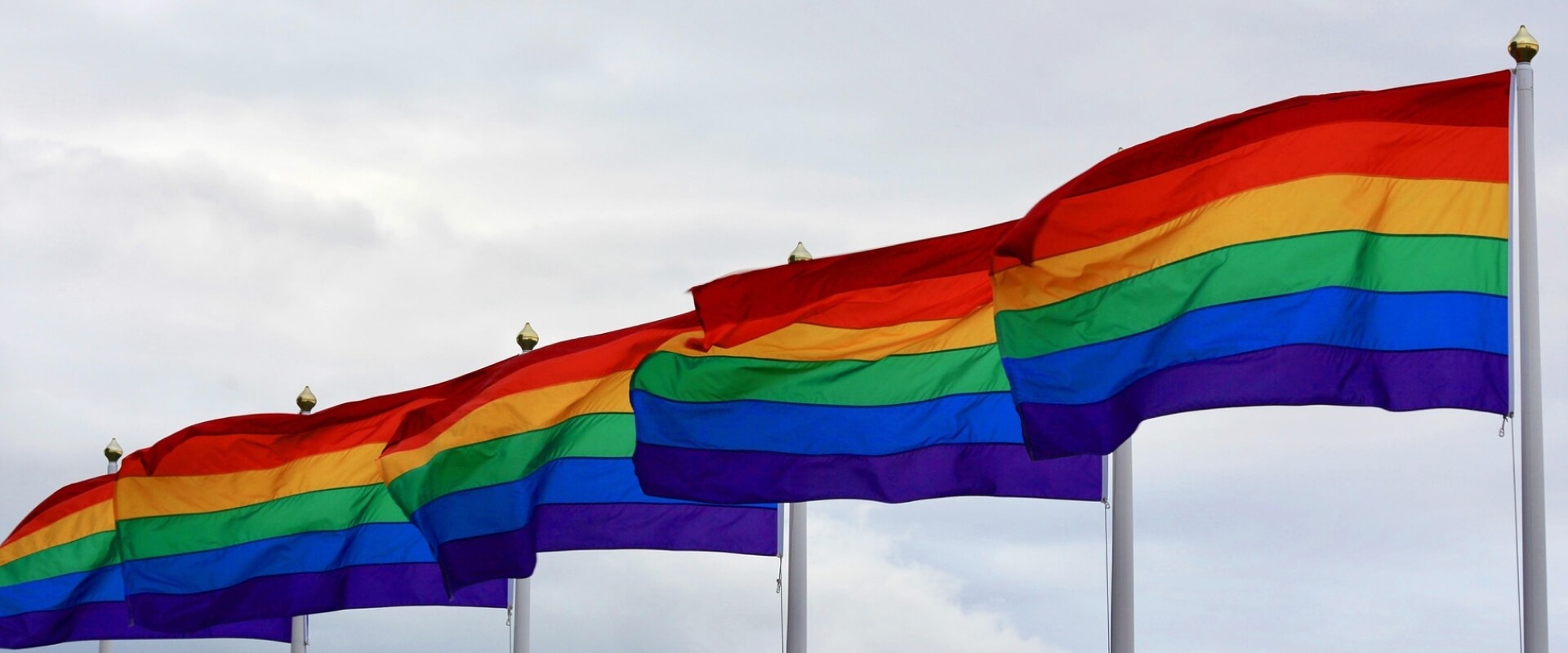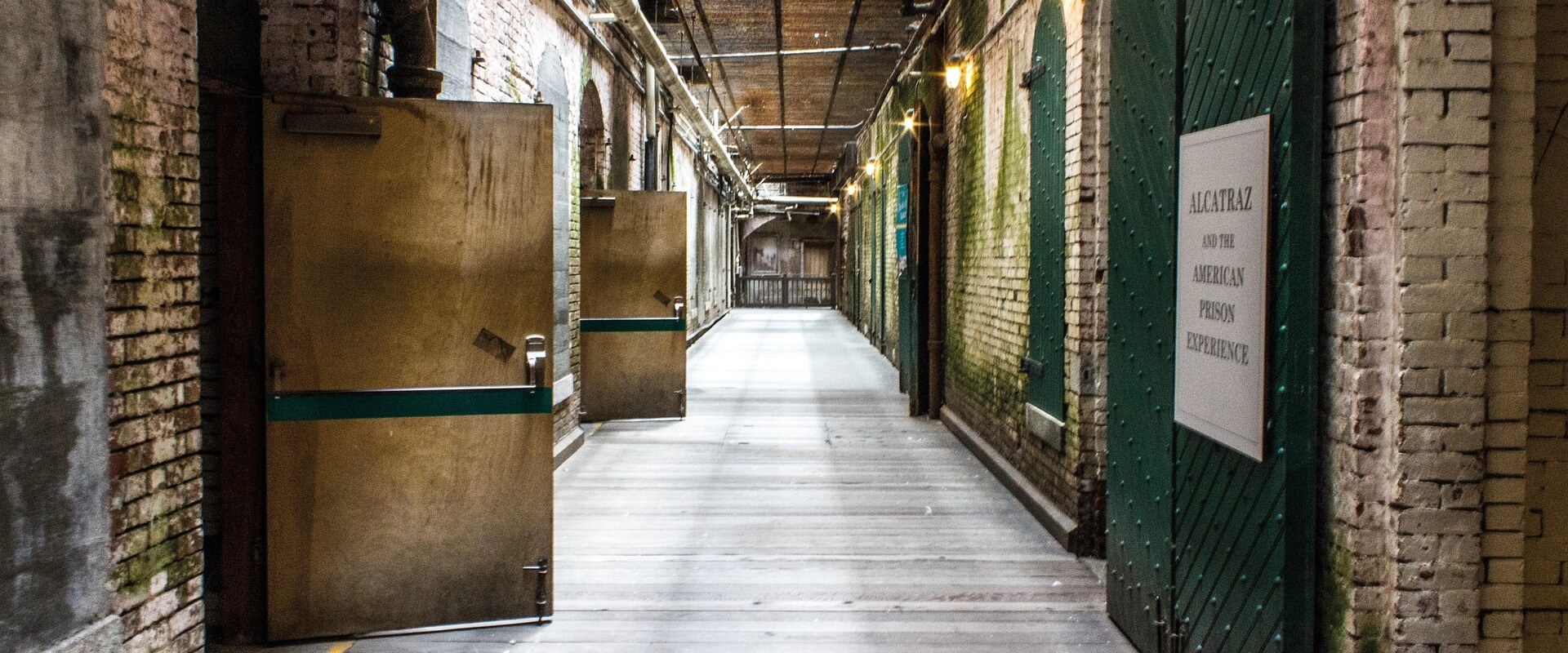Sexuality: Stigma and Punishment
ENFORCEMENT OF GENDER CONFORMITY THROUGH PRISON REGULATIONS
Beyond placement decisions enforcing gender binaries and punishing gender nonconformity, prisoners' gender identity and expression are denied and suppressed in innumerable ways through prison regulations.
First, the criminal legal system as a whole refuses to recognize transgender prisoners' chosen names and gender identities. As a result, transgender people are routinely referred to by the names assigned to them at birth on their badges, medical records, and other identifying documents throughout their incarceration, and they are addressed by guards and prison officials in a manner dictated by the gender assigned to them at birth. Far worse, many transgender prisoners are called "that," "it," "faggot," and other homophobic and transphobic slurs by prison officials.
Transgender prisoners are also deprived of access to clothing matching their gender identity. Frequently, transgender women are deprived of bras, even when obviously medically necessary, with potentially serious health consequences. In some circumstances, the mere possession of a bra may subject a prisoner in a male facility to discipline. It is also routine for transgender women confined in men's institutions to be denied makeup and other cosmetics generally provided to other female inmates of the same security classification. Transgender men housed in women’s institutions are forced to wear "feminine" attire, a practice they experience as profoundly violative. One transgender man housed in a California prison reported that "at one point I was being made to wear a dress, despite the fact that no one else was forced to. It was just to humiliate me.” Moreover, many transgender people report they are forced to groom their beards and cut their hair or nails to conform to traditional male and female gender presentations.
The rigid enforcement of gender norms, as well as the use of segregation and denial of even basic needs, as a means of regulating prisons as queer spaces, extends to the provision of- or failure to provide- medical care inside penal institutions.
DENIAL OF PRISON HEALTH CARE
The poor quality of health care in U.S. prisons is well documented. Where the lives of queers and HIV-positive prisoners, who may or may not be LGBT, are concerned, provision or denial of health care is used as an additional location of punishment through institutional forms of derision, dehumanization, abuse, and erasure of humanity. For instances, the vast majority of state and county penal institutions deny transgender prisoners access to hormone treatment necessary for the maintenance of their gender identity. Although the generally accepted standards of care for what the American Psychiatric Association characterizes as “gender identity disorder” (GID) in the DSM-IV dictate that access to hormone therapy can be medically necessary, penal authorities insist on denying transgender people such treatment on the grounds that it is merely “cosmetic.”
In very few states, and in federal prisons governed by the Bureau of Prisons (BOP), transgender prisoners can receive hormone treatment, albeit under very limited and restrictive conditions. In most cases it is the official policy that prisoners can only continue to receive hormone treatment in prison where they can demonstrate they were prescribed and were taking such medication prior to their incarceration. Not only is this the only condition for which individuals must prove they were receiving treatment prior to incarceration in order to obtain treatment in prison, in many cases, this is an insurmountable obstacle. Due to lack of affordable medical care, absence of insurance coverage for medical treatment related to gender identity, and the discrimination and humiliation transgender people face in the medical establishment, many transgender people are only able to obtain hormones through unregulated means, and therefore have no documentation to prove they were prescribed these medications on the outside.
In such cases, despite the presence of physical characteristics evidencing longstanding hormone treatment, as well as prior administrative recognition of medical treatment affirming gender identity by way of legal name changes and adjustments to gender markers on identity documents, transgender inmates are denied medical treatment necessary to maintain their gender identity in prison. Even in instances where an individual is approved for such treatment, it is often provided sporadically, inconsistently, at inappropriate doses, and without accompanying psychological support, thereby endangering transgender inmates’ health and wellbeing. The denial of access to hormone treatment has profound effects, including extreme mental distress and anguish, often leading to an increased likelihood of suicide attempt, as well as depression, heart problems, and irregular blood pressure.
Linda Patricia Thompson's experiences exemplify the trauma many transgender women experience while incarcerated. Prior to her incarceration, Thompson had been living as a woman for a number of years and had legally changed her name. However, she could not afford gender reassignment surgery or medically approved hormone treatment, which would have required approval by two physicians and one psychiatrist to obtain a prescription. She did, however, obtain hormones by other means, and had been taking them continuously for a significant period of time. Once incarcerated, Thompson was housed in a male facility and denied access to hormone treatment. In the throes of the profound depression and psychological distress that ensued, she took matters into her own hands. On two separate occasions she attempted to amputate her own genitalia, "nearly bleeding to death in the process." According to her attorney, Bruce Bistline, "That sort of self-mutilation is not extraordinary in the transgender prison population. The level of desperation is just that high." The Harry Benjamin Standards of Care for treatment of GID confirm that the rapid withdrawal of hormone therapy can lead to the severe psychiatric symptoms and self-injurious behavior exemplified in Thompson’s case. It can also have less catastrophic, but nevertheless distressing physical side effects, leaving incarcerated transgender people “trapped in a netherworld between manhood and womanhood.”Additionally, lack of access to medical treatment unrelated to maintenance of gender identity can have profound effects on transgender prisoners. For instance, transgender women who are incarcerated are disproportionately low-income women of color who also suffer increased risk of diabetes, high blood pressure, sickle cell anemia, and undetected breast cancer due to limited or nonexistent access to medical care on the outside. Transgender people also suffer from long-term health effects of hormone therapy, including an increased risk of cancer, liver damage, depression, hypertension, and diabetes, which are only complicated by irregular or interrupted access to hormone treatment while inside prisons. As a result, without proper medical treatment, transgender inmates face severe detrimental health consequences. Unfortunately, neglect and intentional denial of medically necessary treatment to transgender people is but one aspect of the medically mediated punishment of sexual and gender nonconformity.
Another is the treatment of prisoners with HIV/AIDS, a health condition inextricably associated with queerness in the public imagination. The turbulent mix of fear, rage, and hysteria characterizing the early years of the HIV/AIDS crisis has been magnified inside the controlled and retributive world of penal institutions. As a result, what Kunzel calls “indentifying practices” mark all HIV-positive prisoners- both queer and heterosexual- as criminally different, dangerous, and diseased.
At Limestone Correctional Facility in Alabama, the loathing associated with the archetype of the disease spreader embodied in HIV-positive prisoners was distilled into a physical structure—a drafty, leaky warehouse that served as a segregated unit for male prisoners with HIV/AIDS. The prisoners sequestered in this crowded, vermin-infested unit—many of whom were poor and suffered from multiple chronic health conditions—lived, ate and slept in a situation so wretched that is was characterized as “lethal abandonment.”
After a series of staphylococcus infections broke out, the Southern Center for Human Rights (SCHR) filed a class action suit on behalf of the HIV-positive prisoners housed at Limestone against the Alabama Department of Corrections (ADOC) and the private company it contracted with for prison health services. Dr. Stephen Tabet, an infectious disease specialist, reviewed the medical treatment prisoners had received, and concluded that almost all of the forty-three HIV/AIDS-related deaths at Limestone between 1999 and 2003 were “preceded by a failure to provide proper medical care or treatment," and that most patients died of preventable illnesses. Many who died were malnourished, suffered from "wasting syndrome,” a preventable, AIDS-related involuntary, significant weight loss, chronic diarrhea, or weakness and fever. He also found that coinfections, such as tuberculosis and hepatitis B and C, and opportunistic infections such as Pneumocystis carinii pneumonia, were often simply not diagnosed, or if they were, not appropriately treated. Tabet took particular note of the disproportionate suffering of prisoners with physical disabilities in a setting so hostile to their needs that they had no access to appropriate bathing facilities. Despite litigation efforts until 2006 and the ADOC’s termination of its contract with one private medical care provider, the treatment provided to HIV-positive prisoners at Limestone—while improved as a result of legal action—continued to be problematic.
Likewise, Dormitory E in Alabama's Julia Tutwiler prison for women served as a segregated for HlV-positive women, where prisoners were subjected not only to involuntary disclosure of their HIV status, but also prohibited from working any jobs or attending any educational and rehabilitative programs, as well as many religious and recreational activities. Years of litigation and organizing efforts by the ACLU and others were necessary before the ADOC abandoned rules prohibiting HIV-positive prisoners’ participation in work-release programs in 2009, but some aspects of segregation of HIV-positive prisoners remain.
While Limestone's segregated unit may have been uniquely Dickensian, and Alabama insisted on segregating prisoners with HIV/AIDS long after many states abandoned the model, the dehumanizing treatment of HIV-positive prisoners remains widespread. Also, according to Mary Sylla, founder and director of policy and advocacy for the Center for Health Justice, "HIV treatment in most U.S. prisons and jails lags behind treatment provided in the broader community."
Some jurisdictions require mandatory HIV testing for prisoners, others do not. The Centers for Disease Control and public health advocacy organizations argue that people who are incarcerated should be able to “opt out” of institutional testing programs, begging the question of whether it is truly possible for people whose entire lives are under the control of penal authorities to freely consent to or decline testing without fear of negative consequences. Moreover, anonymous testing, considered a best practice on the outside, is not available inside prisons. Violation of a medical confidentiality for prisoners who are tested is commonplace. Waheedah Shabazz-El learned she was HIV-positive during a routine examination while incarcerated in Philadelphia’s Cambria Correctional Center. “The tester blurted out that I was HIV positive in a busy hall area.. Everyone walking by could see me. I sobbed and wanted to kill myself.”
Once prisoners are diagnosed as HIV-positive their medical care is often erratic and inadequate. For example, the timely and regular provision of HIV combination therapy, commonly known as the cocktail, in which three or more anti-HIV drugs are administered in a specific regimen, is essential to many prisoners with HIV. Failure to administer the medications properly not only impedes the efficacy of treatment but also can create resistance to the drugs being used. Some prisons do not maintain adequate supplies of HIV medications and run out for weeks at a time. In other circumstances, prisoners with HIV/AIDS fail to receive their daily drug regimen due to transfers within the prison system, attendance at court dates, or, ironically, visits to a medical clinic. As Waheeda Shabazz-El reports, “On numerous occasions, I received my medications late.”
Antonio O., a thirty-three-year-old, openly gay, HIV-positive man from El Salvador and a lawful permanent resident of the United States was transferred to the U.S. Immigration and Customs Enforcement’s (ICE) San Pedro Service Processing Center (SPSC) in California after an arrest on a minor drug offense. In 2007, he told HRW that throughout his incarceration he had great difficulty staying on his medication regimen: jailers tried to reduce the number of medications he was taking, and then, upon arrival at SPSC, officials confiscated his medications for several days. “[The guards] look at us as if we’re inferior, not only because we’re gay but because we’re immigrants,” he said. “To them, we’re nothing but maggots from another country that need to be swept out.” That same year, Victoria Arellano, a transgender woman detained in SPSC’s facility for men, died shackled to her bed after being denied appropriate HIV/AIDS medication and treatment, despite, “increasingly desperate requests for urgent medical attention made by Arellano and [her] fellow detainees as [her] conditions deteriorated in the weeks prior to [her] death.” An investigator from HRW, arriving in the wake of Arellano’s death, learned that less than twenty-four hours prior to the visit, more than twenty detainees who witnessed the events leading up to Arellano’s death were transferred out of the Los Angeles area. According to one survey, 38 percent of correctional medical-care providers reported that an HIV specialist is never available to prisoners. An emphasis on cost cutting usually means significantly lower pay for medical staff in prisons and jails, making it difficult to recruit and retain highly qualified staff. In another cost-cutting move, more than half the states are expanding their use of “telemedicine,” or videoconferencing, for physician consultations with prisoners, further reducing the quality of care. Judy Greenspan, of the HIV-Hep C in Prison Committee of California Prison Focus notes bluntly that “there’s a lot lost in the translation” when a physician peers at the prisoner through a video screen, trying to determine what tests to order based on a digital image and computer records.
As is the case for queers in general, the stigma associated with HIV-positive status in prison extends beyond punitive segregated housing conditions and denial of appropriate medical care to being subjected to heightened surveillance and punishment. For instance, Joseph Bick, chief medical officer and director of HIV treatment services at the California Medical Facility at Vacaville, acknowledged that HIV-positive prisoners may be punished more severely for sexual activity or fighting, and may be denied access to work and educational opportunities that could lead to reduced sentences.
Despite the lack of any political power and control over their existence, prisoners, including many who are LGBT, creatively resist the daily onslaught of violence and repressing they endure, acting alone or collectively, in open or secretive ways. Still, the violence and degradation that are integral to prisoners’ live experiences demand that we ask ourselves what can be done to prevent the myriad human rights violations perpetrated on millions of people warehoused in U.S. penal institutions.
Over the past two centuries, reformers, advocates, and activists have waged campaigns to reform prisons—a cause mainstream LGBT groups have largely ignored. Nonetheless, a growing number of progressive queer groups, including SRLP, TGJIP, the Transformative Justice Law Project (TJLP), and Project UNSHACKLE, place the lives and needs of prisoners who are queer in the center of their vision. Working with other advocacy and human rights organizations, they seek to force penal officials to respond to their needs, most recently joining with others in issuing a Call for Change to address sexual violence suffered by queers in prison.
While these ongoing efforts may produce changes for individual prisoners of facilities, systemic and transformative change has proven elusive. The violence and punishment visited on LGBT prisoners “are not anomalies,” and they cannot be eradicated through reform. They are deeply embedded in the fabric of the prison system, and perpetuated through queer criminalizing archetypes. Not only have prisons failed to deter crime and produce safety, they are sites where the safety, dignity, and integrity of all prisoners, including LGBT prisoners, are eviscerated, begging the question of whether freedom from violence for LGBT people—indeed for any community—can be purchased by the continued institutionalization of such inhumanity and brutality.
Notes
An additional excerpt, from the chapter titled "The Ghosts of Stonewall: Policing Gender, Policing Sex," can be accessed here.




